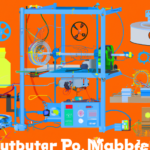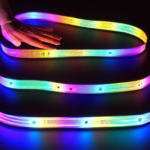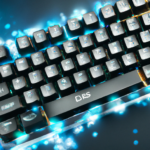
Introduction: Explanation of the concept of creating realistic fantasy models with 3D printing.
When it comes to creating realistic fantasy models, 3D printing technology has been a game changer. With the help of computer-aided design software, makers can now bring their imaginative ideas to life like never before. Whether it’s small figurines or larger-than-life statues, the possibilities are endless with 3D printing.
The art of creating realistic fantasy models with 3D printing requires a blend of creativity, technical skill, and knowledge of the latest trends. With 3D printers becoming increasingly affordable and user-friendly, more and more people are starting to dip their toes into the world of digital model-making.
By harnessing the power of 3D printing, makers can create models with intricate details and textures that were once impossible to achieve using traditional methods. With the right software and materials, the sky’s the limit in terms of what can be created.
With that said, there are several key factors to consider when creating realistic fantasy models with 3D printing. From designing to post-processing, every step of the process plays a crucial role in achieving the desired end result. In this article, we’ll dive into these factors in more detail to help you get started on your journey to becoming a master 3D model-maker.
Benefits of 3D printing in model-making: A brief overview of how 3D printing has revolutionized the model-making industry.
3D printing has transformed the model-making industry in many ways. One of the most significant benefits of 3D printing is its ability to streamline the production process. Unlike traditional methods, 3D printing eliminates the need for labor-intensive manual work, allowing makers to focus their efforts on the more creative aspects of model-making.
Another major benefit of 3D printing is its ability to produce complex designs and geometries with ease. Using traditional methods, creating a model with intricate details and shapes could take a significant amount of time and skill. However, 3D printing software and machines have made it possible to create these designs quickly and accurately.
3D printing also allows makers to produce high-quality models consistently. Since the process is automated, models can be reproduced with the same level of precision and accuracy every time, ensuring a consistent level of quality throughout each production run.
Overall, the benefits of 3D printing in model-making are numerous, ranging from increased efficiency and consistency to the ability to produce complex designs with ease. As this technology continues to evolve, makers will undoubtedly find even more innovative ways to leverage its power to create realistic fantasy models that are truly one of a kind.
Preparing for 3D printing: Discussion on the importance of preparing the 3D model before printing it.
Before starting the 3D printing process, it’s important to prepare the 3D model to ensure the end product is accurate and high-quality. One of the crucial steps in this process is checking the model for errors.
Any errors in the 3D model can lead to issues during the printing process, resulting in a less-than-ideal final product. For example, if there are any gaps or holes in the model, the 3D printer may not be able to print certain areas or the model may appear distorted.
To avoid errors, it’s essential to check the 3D model thoroughly before printing. This can be done using specialized software that’s designed to highlight any problem areas in the model. Once these areas are identified, they can be fixed using editing tools built into the software.
Another important aspect of preparing for 3D printing is setting up the print bed. The print bed is where the 3D model will be printed, and it’s crucial to ensure it’s level and clean. Even slight variations in the bed’s levelness can lead to distorted or warped models.
Preparation also involves selecting the right settings for the 3D printer and material. Choosing the correct resolution, infill percentage, and other settings will ensure that the model is printed correctly and with the desired level of detail.
In summary, preparing the 3D model and printer before printing is a critical step in the process of creating realistic fantasy models with 3D printing. With the right tools, attention to detail, and patience, makers can ensure their models come out flawlessly every time.
Designing for 3D printing: A glimpse into the techniques involved in designing a model for 3D printing.
Designing a model for 3D printing requires specific techniques to ensure the final product is as realistic and detailed as possible. Unlike traditional model-making methods, designing for 3D printing involves taking into account aspects such as material type, printing technology, and resolution.
One important technique in 3D printing design is using support structures. These are temporary structures added to the model to provide stability and prevent warping during the printing process. Support structures can be either automatic or manually added using design software.
Another technique is optimizing the design for printing with specific materials. Different printing materials have varying properties, such as flexibility, durability, and translucency. By considering these properties during the design process, makers can ensure the final product meets their desired characteristics.
Designing for 3D printing also requires an understanding of the limitations of the technology. Certain details and shapes may not be possible to produce with 3D printing, and it’s important to take these into account to avoid designing models that cannot be printed.
Additionally, 3D printing can be an iterative process; meaning that models may need to be printed multiple times, with adjustments made to the design in between each print. This allows makers to refine their design until it is exactly what they want it to be.
In summary, designing for 3D printing involves techniques specific to this technology, like utilizing support structures and optimizing the design for specific materials. It also requires an understanding of the technology’s limitations, and an iterative design process to ensure the final product is as realistic and detailed as possible.
Choosing the right materials: A guide to the various materials used in 3D printing and their relevance in creating realistic fantasy models.
Choosing the right materials is an important aspect of 3D printing that can significantly impact the final quality and appearance of the model. With a variety of materials available for 3D printing, understanding the properties and applications of each material is crucial for makers.
Some common 3D printing materials include:
1. PLA (Polylactic Acid): One of the most widely used materials in 3D printing due to its ease of use and availability. It’s an environmentally friendly and biodegradable material, making it a popular choice for makers looking for a sustainable option.
2. ABS (Acrylonitrile Butadiene Styrene): Known for its durability and strength, ABS is often used for functional parts and models that require high impact resistance.
3. PETG (Polyethylene Terephthalate Glycol): A popular material for 3D printing clear and translucent models, as well as items that require a higher degree of flexibility and toughness.
4. Nylon: Tough and durable, nylon is often used for creating parts that require high flexibility, such as hinges, gears, and other mechanical parts.
5. Resin: Most commonly used for printing highly detailed and intricate models, resin is a material that is cured using light exposure rather than heat.
Choosing the right material for a 3D printing project depends on the specific requirements of the model. Factors such as desired finish, material properties, and the model’s intended use should all be taken into consideration when choosing a material.
In summary, selecting the right material is a vital aspect of 3D printing. With so many materials available, it’s important to understand their properties to determine which material is best suited for a particular project. By making a well-informed decision, makers can ensure that their models are both functional and visually appealing.
Post-processing: An explanation of the steps required to achieve a detailed, realistic finish on a 3D printed model.
Post-processing is an essential step in achieving a detailed and polished finish on a 3D printed model. Post-processing techniques can help smooth out rough surfaces, remove support structures, and add color to the final product.
One common post-processing technique is sanding. Sanding can help remove the rough edges and visible layer lines left behind by 3D printing. Sanding can be done by hand or with power tools, depending on the size and complexity of the model.
Removing support structures is another important post-processing step. Support structures are typically added to models during the printing process to provide stability during printing, but they must be removed after printing. Makers can use pliers or other cutting tools to carefully remove any remaining support structures.
Applying a primer or paint is another post-processing technique that can give a 3D printed model a finished appearance. Primers can help fill in any gaps or holes in the model, while paint can add color and detail.
Finally, adding a clear coat or finish can help protect the model and give it a glossy appearance. There are several types of finishes available, including matte and glossy finishes, as well as UV-resistant coatings for outdoor use.
Overall, post-processing is a critical step in the 3D printing process that can significantly impact the final quality and appearance of the model. By taking the time to post-process a 3D printed model, makers can achieve a professional-looking finish that truly showcases the potential of 3D printing technology.
Conclusion: A summary of the key takeaways from the article.
In summary, the art of creating realistic fantasy models with 3D printing involves a combination of creativity, technical skill, and knowledge of the latest trends. 3D printing has revolutionized the model-making industry, offering countless possibilities for creating models that are both intricate and realistic.
From preparing the 3D model to selecting the right materials, designing for 3D printing requires techniques specific to this technology. Checking the model for errors, using support structures, optimizing the design, and understanding the limitations of the technology are all important aspects that need to be carefully considered.
Once the 3D model is printed, post-processing techniques such as sanding, removing support structures, applying a primer or paint, and adding a clear coat or finish can help give the model a professional-looking finish.
In conclusion, 3D printing has opened up a world of possibilities for model-making, offering makers the ability to create intricate, realistic, and unique models. With its rapidly evolving technology and growing accessibility, 3D printing is sure to continue reshaping the boundaries of what is possible in the world of model-making.






